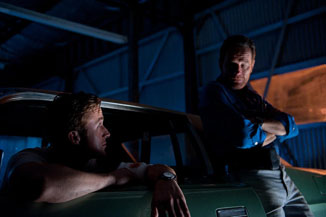|
|
Movie Review: DriveBy Matthew HuntleySeptember 22, 2011
Still, if you accept Drive as an exercise in style, it’s worth experiencing, because the style is quite impressive and beautiful. The opening sequence is masterful in the way it slowly reveals just how dynamic Driver is and how the streets of L.A. are his playground against cop cars and helicopters. The images tell us this, which is why it’s unnecessary for Shannon to speak about it later on. The soundtrack is strong, too, incorporating songs that seem to have been chosen for their aesthetic value instead of their popularity. As for the inevitable car chase, it’s one of the better examples in recent years and starts with a sound that’s so pulsating, I doubt anyone will not be startled when they hear it, even if they expect it. Car chases are so standard these days they’re often boring to watch, but the one in Drive is more credible because we know the main character is also a professional driver. Of course, we’ve seen many other iterations of it, but it still pumps us up and leads into the final act, which is a gratuitous and excessive mix of violence and gore. Even though they don’t bear much consequence to the thin story, at least the filmmakers make them look pretty. I knew going in that Drive was nominated for the Palme d’Or at the Cannes Film Festival, which surprises me, because it’s not THAT good. It works as a stylish action drama, and I admire its craft, but it didn’t leave me in as much awe as I was expecting. The filmmakers definitely have energy and talent, and if their technical skills could be matched by an equally captivating story, they’d probably have a masterpiece on their hands.
|

|
|
|

|
Friday, November 1, 2024
© 2024 Box Office Prophets, a division of One Of Us, Inc.


